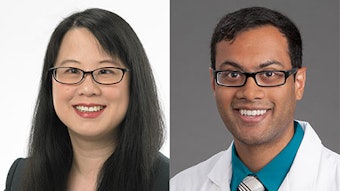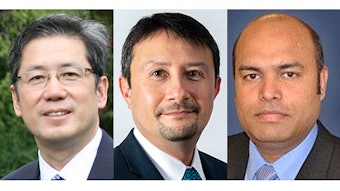Abracadabra, anesthesia!
Firsthand accounts of eye-opening research.

The 2023 session, “How Do Anesthetics Work Their Magic? Multiple Approaches of Discovery,” featured an in-depth lecture, co-presented by the Foundation for Anesthesia Education and Research (FAER), which examined several lines of investigation essential to understanding and exploring the phenomenon of anesthetic action.
Session moderator Margaret M. Sedensky, MD, set the stage for advancements on this topic and introduced the three panelists, whose research contributes to learning more about the anesthetics used in daily practice. Dr. Sedensky is Professor of Anesthesiology and Pain Medicine at the University of Washington, Seattle, and Principal Investigator at Seattle Children’s Research Institute.
“There is a great deal of excitement in the field that stems from the ability to trace neurocircuitry in the brain and use very sophisticated tools to activate/inactivate regions of the brain that are responsible for behavior in anesthetics,” said Dr. Sedensky. “There are also sophisticated techniques and computational power to analyze large data sets that may reveal anesthetic binding sites.”
Each researcher presented his or her unique approach and focused findings. Richard Levy, MD, FAAP, Professor of Anesthesiology and Pediatrics and Vice Chair of Pediatric Laboratory Research in the Department of Anesthesiology at Columbia University Medical Center in New York City, has been dedicated to the discovery of new anesthetics by analyzing the use of mechanism-based toxicity to reveal innovative biologically based agents.
“We have leveraged observations we made regarding propofol toxicity in the developing heart mitochondria to discover a brand-new anesthetic agent,” said Dr. Levy. “Using this agent, we have uncovered a novel target within mitochondria. We also introduced a new anesthetic that has the potential to be safer than propofol in the context of long-term sedation, thereby avoiding propofol infusion syndrome. We plan to test this in the coming months in an animal model.”
Dr. Sedensky’s investigational method builds on these discoveries. Her team performed a forward genetic screen to identify a target proven to be preserved across species of the animal kingdom. This was, in fact, a worm – and her team now uses it to examine reversible loss of consciousness in humans.
“The efforts of my team have always been to understand how and where volatile anesthetics work,” Dr. Sedensky said. “They were the first general anesthetics, used since 1846. Although we know very well how to use them, it took decades to determine their important molecular targets. This is in part because … they do not bind very tightly – nothing like the affinity of an opioid for its receptor. Our approach has been one that exploits animal models and tools of molecular genetics.”
Each approach or perspective carries its own advantages and disadvantages, said Dr. Sedensky. But bringing them all together is what will help researchers create the whole picture and reach their common goal. George Mashour, MD, PhD, Robert B. Sweet Professor and Chair of Anesthesiology, University of Michigan Medical School in Ann Arbor, spoke to the role of prefrontal cortex in arousal, and Elizabeth Railey White, MD, PhD, Assistant Professor of Anesthesiology and Critical Care at Penn Medicine in Philadelphia, addressed some of the anesthetic modifications that can help to reveal mechanisms.
Dr. Levy emphasized the criticality of this area of research, which is partially due to prior resistance in considering alternative mechanisms of anesthesia.
“It is unknown if we have identified all the pharmacological targets of anesthetics,” he said. “Gaps in knowledge and impartiality have served as barriers to drug discovery. As such, there has been a lack of new anesthetics introduced in the last 50 years.”
Adding to this sentiment, Dr. Sedensky said there hasn’t always been a sense of urgency to exploring options, since anesthetics are generally very safe and effective. But both doctors agree – and have accepted the challenge – that there is still so much more to do and learn about anesthesia to improve the specialty and increase safety and successful outcomes for patients.
“Anesthesiologists possess a simply astonishing power,” she said. “We can render a person unconscious to a surgical incision, and then reverse this state when surgery is over. Imagine surgery without anesthesia! In my mind, understanding how we can make consciousness disappear and reappear should give us clues into the nature of consciousness itself.”








